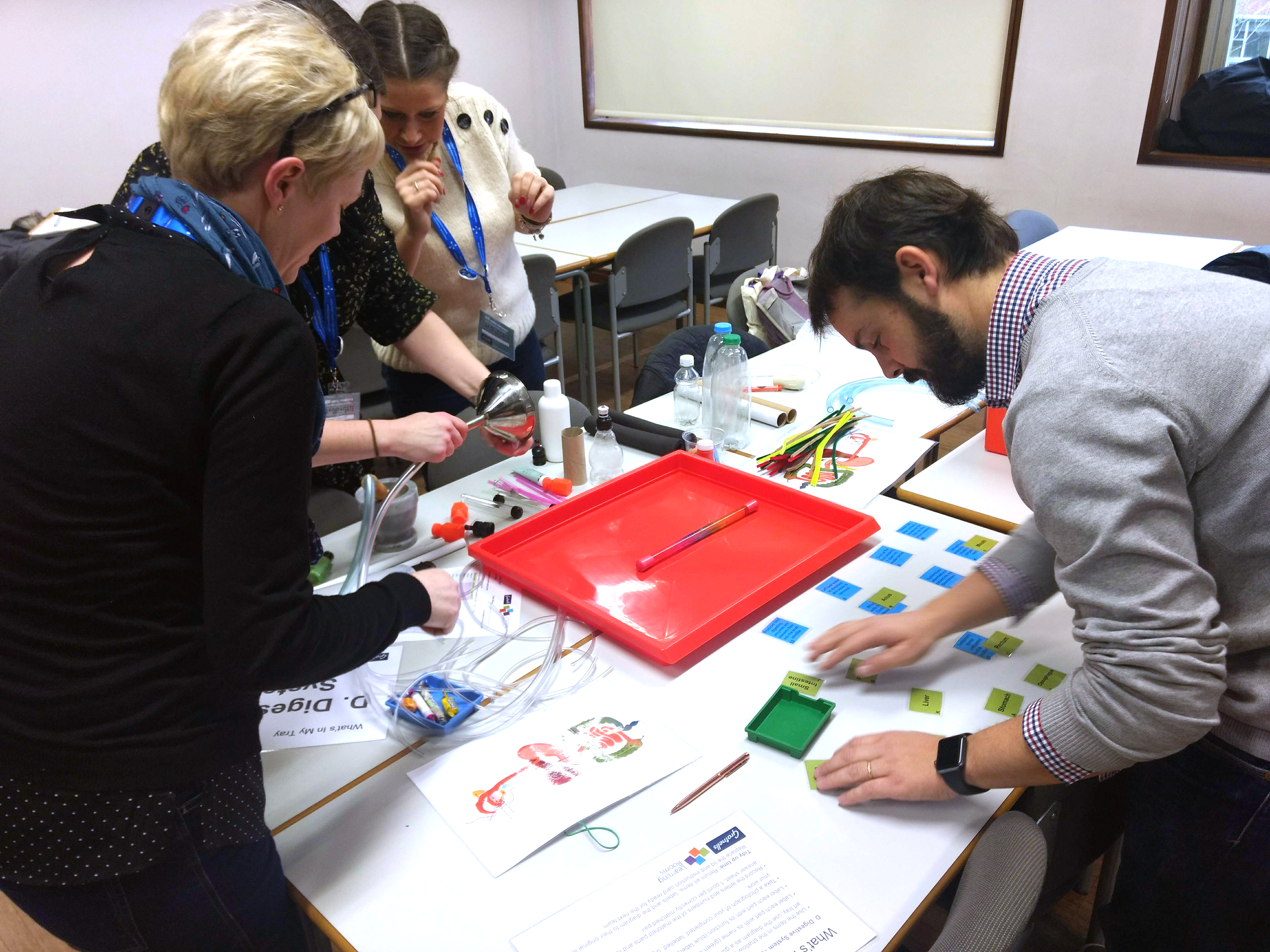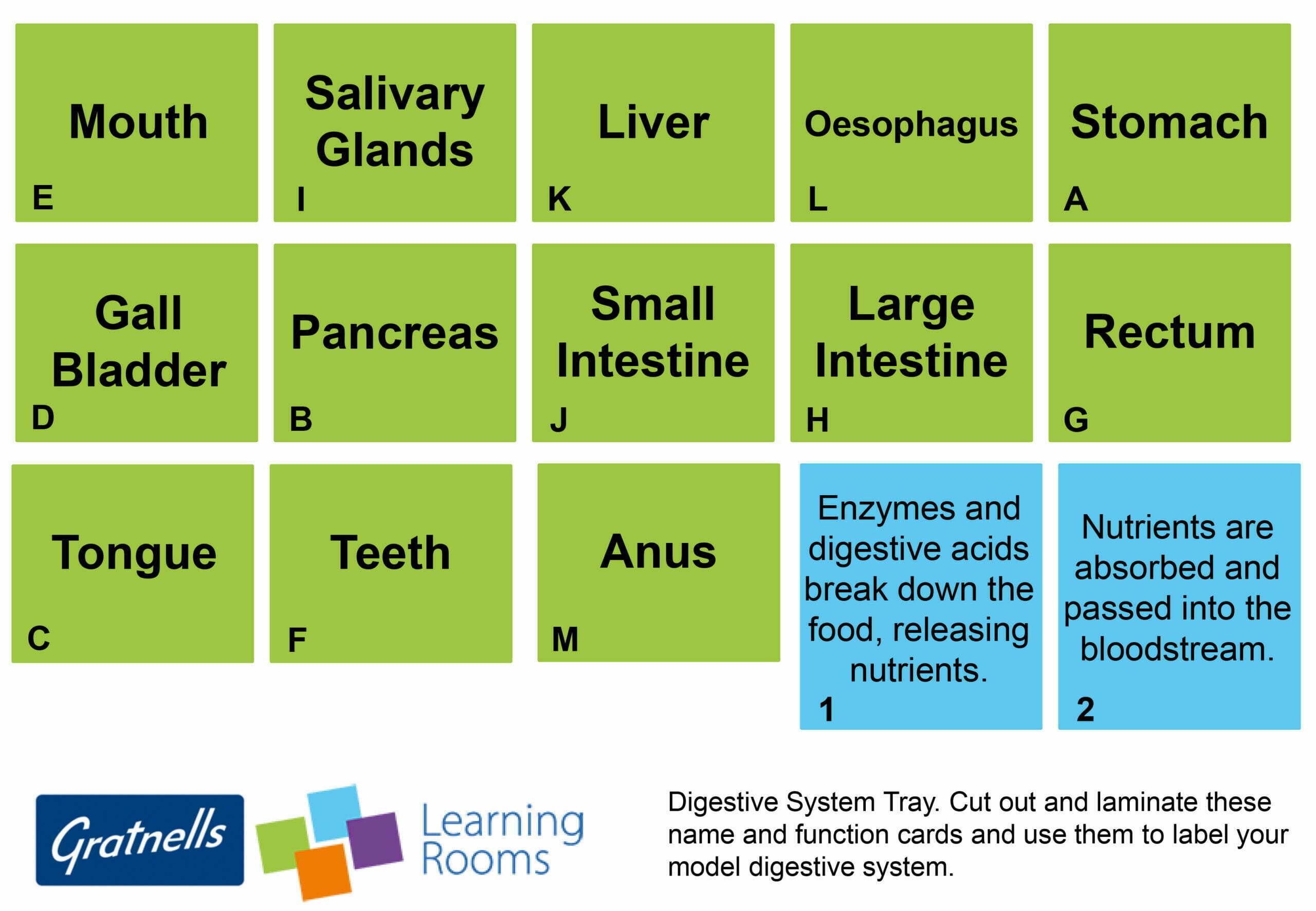Digestive system
This activity was created as part of a Gratnells What’s In My Tray CPD workshop for primary science teachers and teaching assistants to support practical work and delivery of the curriculum. It can be carried out as a stand-alone activity for students or combined with other activities from the session to form a STEM carousel.

The digestive system is the way your body takes in and absorbs the nutrients it needs to work properly and stay healthy. Each part of the digestive system plays an important role in the process and has a specific function. This activity will help you explore each part of the digestive system and its function.
You will need (per team of 4):
- 1 x Red Gratnells art tray
- 1 x Gratnells jumbo tray with lid
- Laminated labels for parts
- Laminated labels for functions
- Unlabelled A3 colour illustration of the human digestive system (optional)
- Recycled materials and props to represent each part of the digestive system (pipes, tubes, straws, bottles in a range of sizes, funnel, small bags etc).
Preparation: Print, cut out and laminate the parts and functions labels. Put all recycled materials and props into the jumbo tray and put the lid on. Put the picture of the digestive system (optional) and the two piles of laminated labels into the art tray.
This activity can be repeated as many times as required and can be completed by individuals or small groups. If using as an individual challenge, increase the amount of time allocated to complete the activity.
What to do:
- Use the items in the jumbo tray to build a model digestive system in the large art tray. Use the diagram as a guide if needed.
- Label each part of the model with its name (green labels).
- Label each part of the model with its function (blue labels).
- Take a photograph of your completed, labelled, digestive system to evidence your work.
- Record the letters and numbers of the matched parts and functions. e.g. W 5.
Tidy up time:
- Return all items, labels and the diagram to their original location. Replace the lid.
Answers:
- A 1
- B 13
- C 12
- D 10
- E 4
- F 8
- G 11
- H 5
- I 9
- J 2
- K 7
- L 3
- M 6
Other things to try…
- Talk about why you have chosen the different props or objects to represent each part of the digestive system and what you know about the function of each part. Can you suggest and find other objects that would represent them better?
- Use secondary sources of evidence, such as books or the internet, to find out more about how each part of the digestive system works. Write your own, additional, function cards and add them to your model.
- Can you replicate some of the motions of the different parts of the digestive system, such as chewing, grinding, squeezing (peristalsis) and mixing?
- Remove some of the labels and descriptions to make the activity simpler for lower age or ability participants. i.e. retain only mouth, tongue, teeth, oesophagus, stomach and small and large intestine.
- Add in some additional parts to extend the activity for older or more able participants. i.e. appendix, pharynx and each part of the small and large intestine (duodenum, jejunum, ilium, cecum and colon) and explore the properties and functions of stomach acid, bile and digestive enzymes. Modify your model to include these additional parts and make additional name and function cards to label them.
- Share your digestive system photographs on social media using #WhatsInMyTray
Health & Safety
As with all Gratnells Learning Rooms What’s In My Tray activities, you should carry out your own risk assessment prior to undertaking any of the activities or demonstrations.


